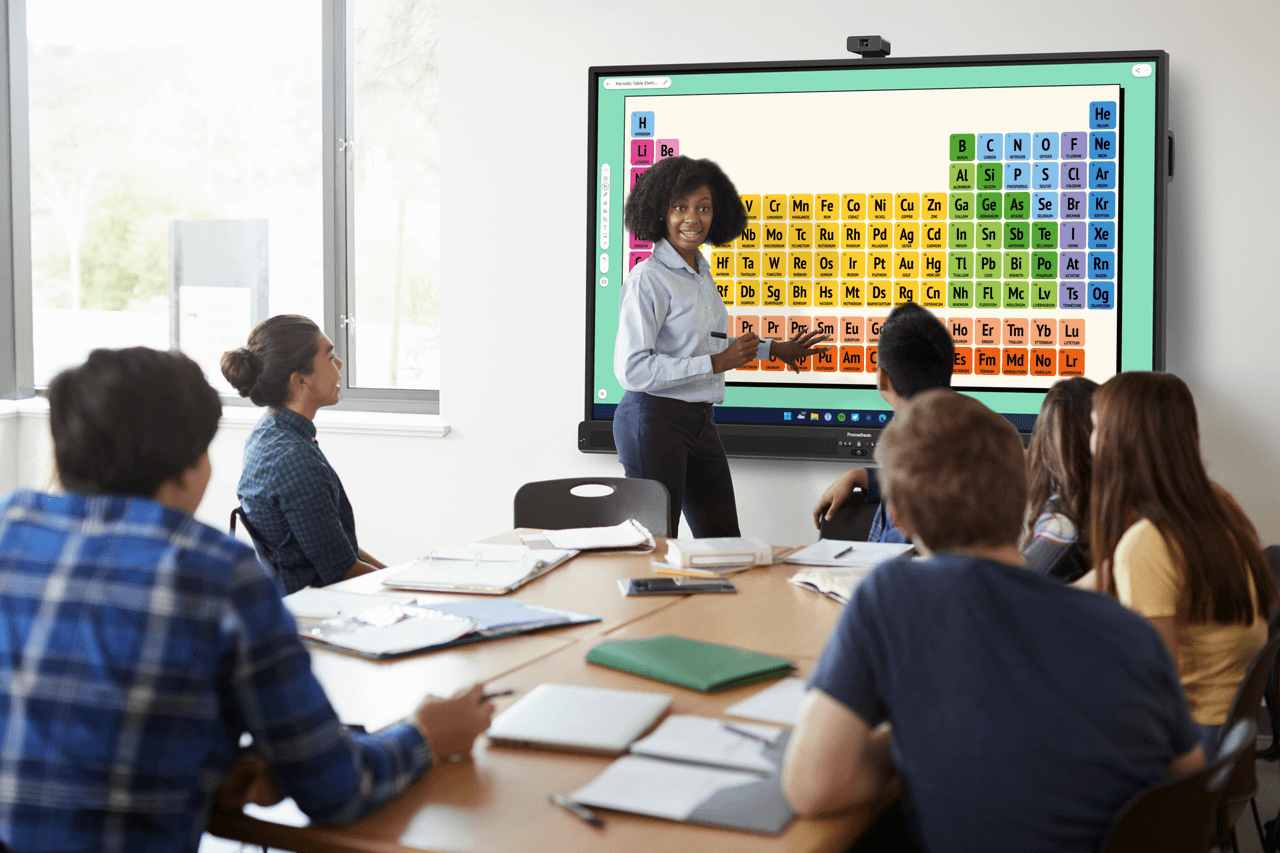Published on May 25th, 2021
The future of classroom design
8 minute read

Next Generation Classroom Design
While learning is increasingly digital, the physical classroom is as important as ever. Studies have shown that classroom design can directly affect a student’s academic progress by up to 16%.
The importance of classroom design was further underscored by the COVID-19 pandemic. Essential measures were taken in response to heightened health and safety concerns: desks were separated, protective plastic dividers were erected, and assigned seating went into effect. With vaccines rolling out across the country, we might now have license to reimagine the classroom post-COVID.
The future of classroom design supports a constructivist approach—learner-centered spaces that embody the principles of student-led learning. There’s no one-size-fits-all design, of course; in addition to student ages, available resources, and building constraints, designs must take into consideration variables ranging from local climate to cultural conditions. Classrooms must also strike a balance between being innovative, while also respecting educator’s current preferences, skills, and traditions. The best classrooms are designed to match the pedagogical practices that will be taught within them.
Flexible Learning Spaces
The classroom’s ability to adapt to the changing and variant needs of teachers and students is essential. This represents a notable shift from the fixed design classrooms of the past that featured rows of desks facing a chalkboard. The classrooms of tomorrow will be fully flexible, with a range of spaces available for individual focus, group collaboration, instruction and presentation.
Classrooms will better facilitate project-based learning, featuring areas designed for a range of activities: wet zones and messy areas, long-term workshop spaces, and exhibit walls where students can present work to their peers. Dedicated “soft spots” will provide students with a quiet, calm place to retreat and reflect. Sensory spaces or “zone rooms” will serve as a place of refuge for students who need to calm overstimulated minds.
Students will have the option to tuck into reading nooks and hideaways, allowing them to engage and retreat as needed. Flexible walls will also be a feature of modern classrooms: sliding screens, clear partitions, and other mobile dividers will allow for multiple configurations enabling teachers and students to define areas based on activities and group size throughout the day. These walls also make it possible for various learning activities to occur simultaneously without interruption, affording students the ability to work on projects and assignments at their own pace.
Fully flexible classrooms will allow students to exercise choice and customize their environment based on their needs.
Flexible Furniture
There are many proven benefits of flexible furniture—modular and flexible furniture further enables the classroom to adapt to student needs.
All cutting edge classrooms will feature a variety of student seating options:
- Chairs with wheels
- Soft seating and bean bags
- Yoga ball seating
- Carpets for sitting or lying down on
- Adjustable height chairs/stools
- Curved huddle seating designed to encourage collaboration
Students may also have the option to work at adjustable standing desks. Tables and other surfaces may feature a whiteboard top, making them authorable and well-suited to collaboration. By giving students the ability to alter and exercise authority over their learning environment, future classrooms will empower students to be self-directed learners.
Classroom Technologies
Technology will be as ubiquitous in the classroom as it is in life outside of the classroom. More students will have access to one-to-one devices, such as laptops and iPads. Additionally, students may use phones for mobile learning. Interactive panels like Promethean ActivPanel will make it easy to instantly access and engage with content, and lesson delivery software will tie everything together for in-person and remote learners alike.
Audio systems and multiple cameras may be stationed around the classroom for students learning remotely. “We’re getting over the hurdle of cameras in the classroom. Distance learning is going to be here forever, so we’ll want to be sure that students at home are getting the same visuals as students in school,” notes Rob Raino of Promethean partner Advanced Classroom Technologies. VR/AR and wearable technology may also feature more prominently in the classroom alongside spaces where students can comfortably, safely use VR headsets.
As schools continue to embrace technology as a crucial learning tool, classroom design will reflect edtech’s role as an integral part of forward-thinking learning spaces.
Connection to Nature
A connection to the natural world will also be a core design tenant of future classrooms. Beyond views to the outdoors, this could mean direct access to outdoor learning spaces that allow learning to spill outside, similar to Thousand Oaks High School’s new Sustainable Outdoor Learning Environment. Optimal classrooms will feature a calm, natural palette—research shows that color can affect students’ energy and moods.
Lighting is also an influential component—natural light will feature in the classroom wherever possible, as well as dynamic, diffuse light that has a natural quality. Natural materials may feature more prominently in the classroom in everything from furniture coverings to building materials. And classroom and furniture design may draw inspiration from biomorphic forms and patterns. There will be many literal connections to nature in the classroom too: fish tanks and window gardens.
These connections to nature will imbue students with a vital appreciation for the natural world.
Classroom as Teacher
Classrooms will be maximally flexible, featuring both nature and technology, while centering student needs. Similarly, we may begin to see more schools that are designed from the inside out: from classroom to school (versus school to classroom) so that each space is designed around learners and the learning experience. The classroom of tomorrow won’t just be a venue for learning—it will function as a teaching tool in and of itself.
Explore the impacts that classroom design can bring to student learning, engagement, and success, and download the infographic.




